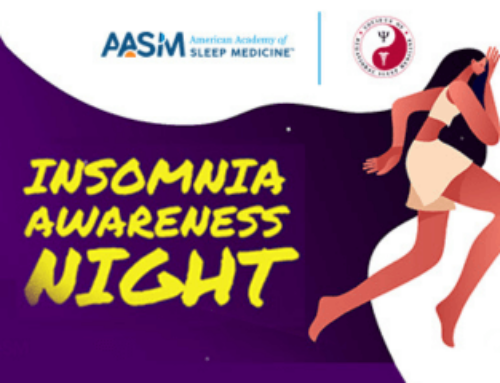DARIEN, IL – Patients and medical providers should be aware that chronic opioid use can interfere with sleep by reducing sleep efficiency and increasing the risk of sleep-disordered breathing, according to a position statement from the American Academy of Sleep Medicine.
Opioid use has boomed in the last decade, with nearly 92 million Americans using prescription opioids and 11.5 million people misusing them. In addition to understanding the risks of opioid addiction and abuse, it is important for health care providers to be aware that chronic opioid use is associated with changes in sleep architecture and an increased risk of respiratory depression during sleep.
“This statement increases awareness among health care providers of the important adverse events that can occur in patients on chronic opioid therapy,” said co-author Dr. R. Nisha Aurora, Associate Professor of Medicine at Rutgers Robert Wood Johnson Medical School in New Jersey. “The paper also highlights the need for providers to recognize and diagnose sleep-related breathing disorders that are frequently seen with chronic opioid use.”
The position statement was developed by the AASM board of directors and is published in the Nov. 15 issue of the Journal of Clinical Sleep Medicine.
Patients who have chronic pain often experience fatigue and disturbed sleep. Studies have shown that chronic opioid therapy has the potential to further disrupt sleep by reducing sleep efficiency, slow wave sleep, and rapid eye movement sleep. Another adverse effect of opioid use is respiratory depression, which can increase the risk of sleep-related breathing disorders such as sleep-related hypoventilation, central sleep apnea and obstructive sleep apnea.
If left untreated, sleep-related breathing disorders can be harmful to a patient’s health. However, they can be diagnosed by a medical provider following an overnight sleep study in a sleep center. Effective treatments also are available, including several modalities of positive airway pressure therapy. Medical providers who care for patients on chronic opioid therapy need to be aware of the signs of disrupted sleep, such as snoring and excessive daytime sleepiness, in order to provide their patients with high quality care.
“Because of the complex relationship between pain, sleep, daytime functioning, and opioid therapy, a strong collaboration between pain specialists, sleep physicians, and primary care providers is needed to optimize patient benefit and minimize complications when opioids are part of chronic therapy,” said Dr. Aurora.
While opioid therapy can contribute to sleep disruption and sleep disorders, it can be an effective treatment for patients with restless legs syndrome (RLS), a sleep disorder associated with disturbed sleep. Some patients with severe, refractory RLS, who are unresponsive or intolerant to other therapies, may find relief by using opioid medications at much lower doses than those used to treat chronic pain.
Dr. Aurora is currently collaborating with the Brain Health Institute at Rutgers to study sleep in those seeking therapy for opioid addiction.
###
To request a copy of the statement, “Chronic Opioid Therapy and Sleep: An American Academy of Sleep Medicine Position Statement,” or to arrange an interview with the study author or an AASM spokesperson, please contact the AASM at 630-737-9700 or media@aasm.org.
The monthly, peer-reviewed Journal of Clinical Sleep Medicine is the official publication of the American Academy of Sleep Medicine, a professional membership society that improves sleep health and promotes high quality, patient-centered care through advocacy, education, strategic research, and practice standards. The AASM encourages patients to talk to their doctor about sleep problems and visit SleepEducation.org for more information about sleep, including a searchable directory of AASM-accredited sleep centers.





